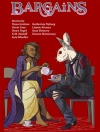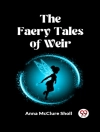In ‘Sylph Etherege, ‘ a masterful exploration of the ethereal and the mundane unfolds, revealing Nathaniel Hawthorne’s characteristic blend of allegory and moral complexity. This tale, nestled within ‘The Snow Image and Other Twice-Told Tales, ‘ employs a lyrical prose style to contemplate themes of idealism, transformation, and the ephemeral nature of beauty. The narrative intricately weaves a story that reflects the Romantic era’s fascination with the supernatural, juxtaposed against the stark realities of human existence, ultimately prompting readers to question the boundaries between reality and imagination. Nathaniel Hawthorne, a pivotal figure in American literature, often drew upon his Puritan ancestry and his own innovative spirit when crafting stories that examined the shadows of the human psyche. His profound interest in moral allegory and the tension between individual desires and societal expectations is evident in this tale. The exploration of elusive yet poignant themes in ‘Sylph Etherege’ can be traced to Hawthorne’s broader literary mission to explore the complexities of human nature, shaped by his own experiences and cultural background. For readers drawn to the intricate interplay of human emotion and fantastical elements, ‘Sylph Etherege’ is an essential piece in understanding Hawthorne’s literary prowess and the depths of his philosophical inquiries. This captivating tale invites readers to reflect upon their own perceptions of beauty and existence, making it a compelling read for lovers of classic literature and those seeking insight into the human condition.
关于作者
Nathaniel Hawthorne (1804–1864) was a quintessential American novelist and short story writer, noted for his rich use of symbolism and psychological depth. Born on July 4 in Salem, Massachusetts, Hawthorne’s Puritan ancestry and awareness of his forebears’ role in the Salem witch trials cast a long shadow over his work, infusing it with themes of guilt, retribution, and the complexities of moral and psychological ambiguity. He was a key figure in the development of American literature during the 19th century, and his exploration of sin, guilt, and social hypocrisy in the context of Puritan history remains powerful today. Hawthorne’s oeuvre includes such celebrated works as ‘The Scarlet Letter’ (1850) and ‘The House of the Seven Gables’ (1851). Both novels exemplify his exquisite narrative style and his exploration of the human condition. ‘Sylph Etherege’, a lesser-known tale found in ‘The Snow Image and Other Twice-Told Tales’, showcases Hawthorne’s fascination with the ethereal and ephemeral and reflects the subtleties of human emotion and the intricacies of social nuance. His tales often delve into the human heart and the struggle between personal authenticity and societal expectation. Hawthorne’s literary style is characterized by his use of allegory and dark romanticism, often set against a distinctly New England backdrop. His influence endures in the realm of American literature and beyond, and he remains a subject of study for enthusiasts of classic literature and students of the human psyche.












